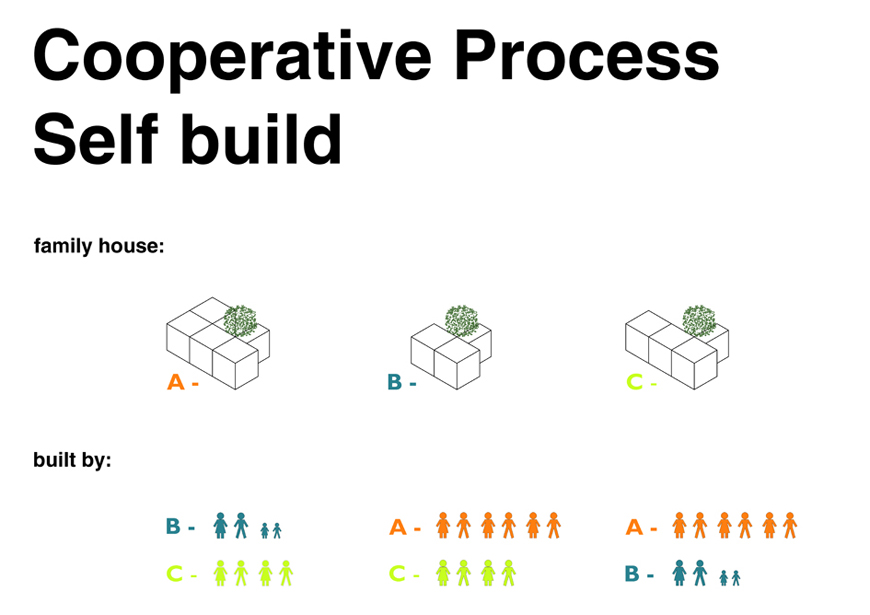#GC2022 is accepting submissions - 25d 27h 05m 44s
The CASALATA (Tin House) project started with a short film which was produced during a post-graduation course in Cinema at M_EIA (International Institute of Arte, Technology and Culture) in Mindelo, Cape Verde.
The film focuses on the issue of the shortage of housing and on the problems the tin house neighbourhoods suffer from. The CASALATA film then evolved into a wider project with the intention of providing a viable strategy to improve the housing problems of Cape Verde. The result is an architectural proposal with the potential for effective implementation.
Context
Cape Verde has shown substantial economic growth over the past years, largely as a result of increased touristic and residential development. This increase, although substantial in quantity, has been less so in terms of quality. The touristic and urban growth pattern of Cape Verde is based on the European Mediterranean costal development model. Once at it's peak, but now in decline, it was characterized by abrupt and unsustainable growth, low quality construction and poor urban planning. Mass tourism and over development is increasing and, with little or no regulation, it has impacted the local heritage. Whilst this increase in development has encouraged people to migrate to the larger cities, it has also created a greater urban imbalance between developed city centres with new infrastructures and the areas more poorly developed with their associated social and economic inequalities.
The Cape Verde cities of Praia and Mindelo are the two main cities with greater shortage of housing. The high cost of construction, inflation in the cost of property and land, in conjunction with the growing rate of unemployment, make purchasing or renting a home difficult for most Cape Verdians. The construction of illegal shelters has therefore spread and is often the only option for poor families who have no housing alternatives or means.
Is this illegality a crime?
The fringes of the cities are populated with illegal constructions which have spread through self build, creating new (sub)urban areas without any form of planning or rationalization. The lack of infrastructures, utilities, sanitation or other services and the basic construction of the shelters make these areas marginalized, unsafe and unsuitable as housing. As the areas of illegal shelters expand, the problems are aggravated and the degradation of the spaces and conditions worsens. What to begin with was already unfit for purpose will soon become even more deteriorated. The economy and the increase in population have stimulated a natural growth of these urban areas emphasizing the disparity between social classes in countries with a housing shortage such as Cape Verde.
Access to suitable housing and to sustainable urban planning is therefore fundamental to avoid or reduce poverty and social exclusion. Read more about the tin houses in Cape Verde here
Strategy: incremental upgrading
The shortage of housing in Cape Verde is not a problem that can be easily or quickly resolved. The families living in tin houses will continue to live in sub-standard conditions for an indefinite period of time, even if the resolution of the housing problem is made to be a governmental priority.
The main objective of the Casalata project is to raise awareness of the problem and propose a strategy for improvement of the living conditions of less fortunate families through urban planning. Whilst producing the Casalata film we became aware of the extent of the difficulties endured by the families living in the tin houses. The poor living conditions of the spaces coupled with a sense of hopelessness and social marginalisation felt by the residents who have little choice but to live illegally, lead us to expand the project and establish a line of action divided into three stages:
strategy-1 [image credit Lara Plácido]
· Firstly – produce a survey of the methods of construction and social organisation of the existing urban process in order to identify the positive factors and re-use them as tools in the development of the project for affordable social housing
· Secondly – based on the research and data from stage 1, suggest smaller scale and affordable adjustments to the existing houses in order to provide immediate improvements to the residents' living conditions. Issues such as thermal comfort, ventilation and natural lighting of the living spaces could be addressed and made to be substantially more efficient.
· Thirdly – develop a proposal for an affordable social housing project which incorporates the knowledge gained during stages one and two. This project will place an emphasis on minimising the environmental impact of the buildings and neighbourhoods and also on educating the residents by making them aware of their role in maintaining their urban conditions.
.jpg)
strategy-2 [image credit Lara Plácido]

strategy-3 [image credit Lara Plácido]

strategy-4 [image credit Lara Plácido]
strategy-5 [image credit Lara Plácido]

strategy-6 [image credit Lara Plácido]
The intention is to bring together all the information in a publication along with the original short film 'Casalata'. You can go to Casalata Project's official website here